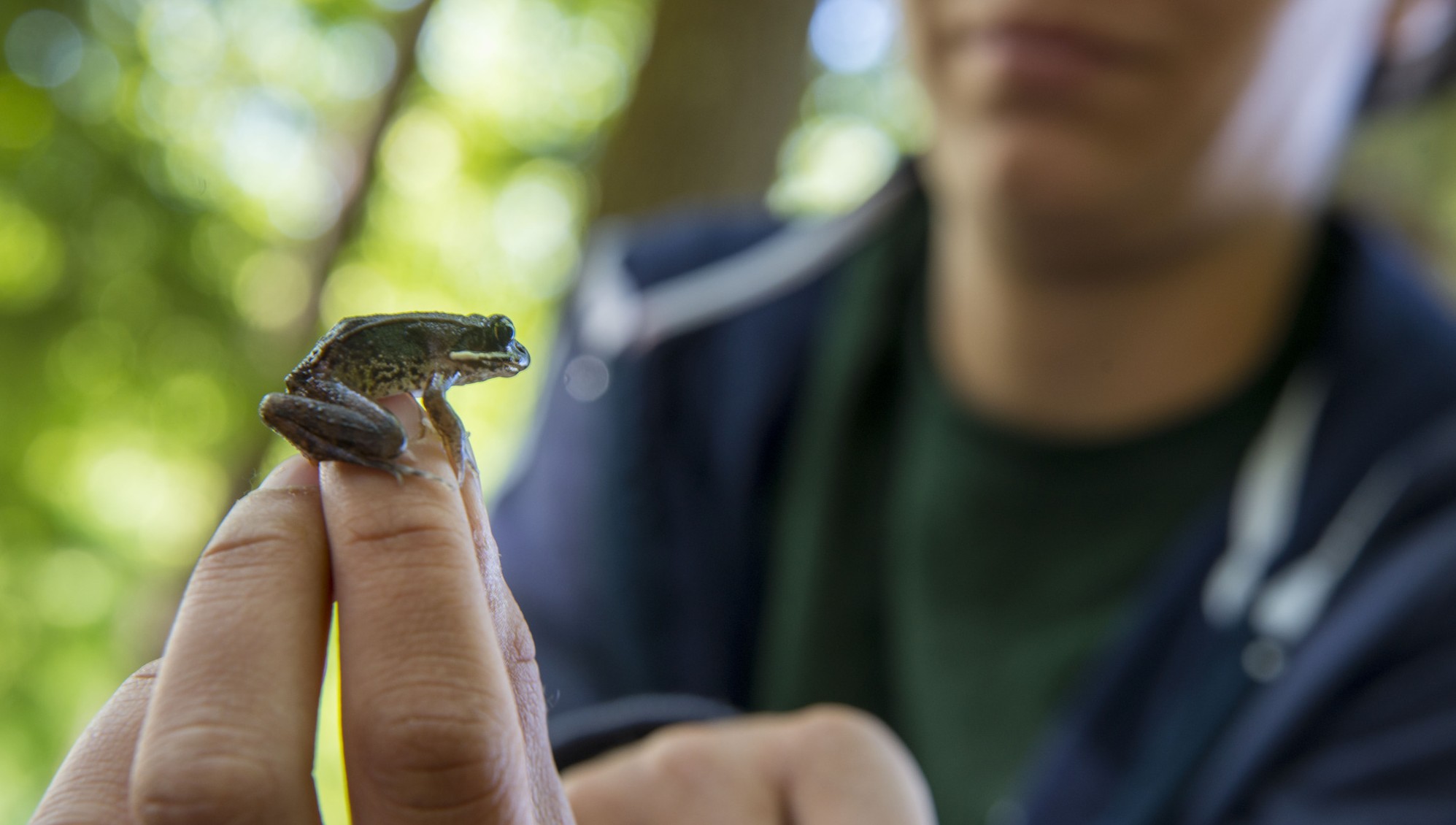
Researchers study waistband for attaching radio transmitters to amphibians
In an attempt to improve how amphibians are monitored, University of Maine researchers evaluated a waistband for attaching external radio transmitters to frogs and toads.
Radio telemetry provides fine-scale temporal and spatial information about an animal’s movements and habitat use; however, its use for tracking amphibians has been restricted by transmitter mass and lack of suitable attachment techniques, according to the researchers.
In the study led by Luke Groff, a Ph.D. candidate in UMaine’s Department of Wildlife, Fisheries, and Conservation Biology, the researchers describe a waistband made from stretch bead cord and evaluate the percentages of resulting abrasions, lacerations and shed transmitters.
Using radio telemetry, the researchers monitored the movements and habitat use of wood frogs in 2006 and 2011–13 in Maine; American toads in 2012 in North Carolina; as well as wood frogs, southern leopard frogs and green frogs in 2012 in South Carolina.
After observing 172 frogs and toads, the researchers found their waistband resulted in an injury percentage comparable to seven alternative waistband attachment techniques, but 12.5 percent fewer animals shed the waistband.
Waistband retention facilitates longer monitoring periods, providing more data per radio tagged animal, the researchers say.
The project’s co-authors are Aram Calhoun, a professor of wetland ecology at UMaine; Amber Pitt of the Department of Biological and Allied Health Sciences at Bloomsburg University in Pennsylvania; Robert Baldwin of the Department of Forestry and Environmental Conservation at Clemson University in South Carolina; and Cynthia Loftin of the United States Geological Survey (USGS) Maine Cooperative Fish and Wildlife Research Unit in Orono.
The findings are documented in the article, “Evaluation of a waistband for attaching external radiotransmitters to anurans,” published by the journal Wildlife Society Bulletin.
